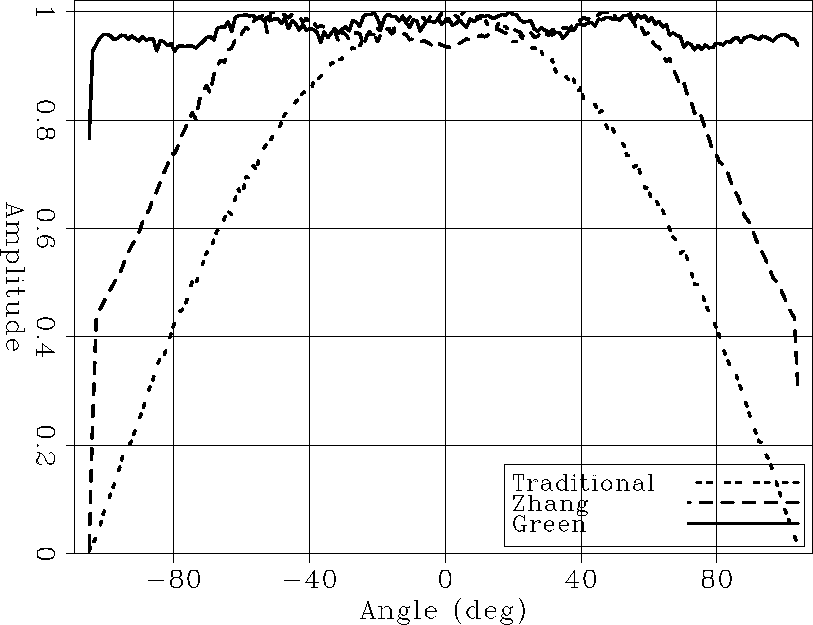 |
Figure 3 Snapshot of the source wavefield in a constant velocity medium using (a) the traditional surface boundary condition, (b) Zhang's surface boundary condition, and (c) the new surface boundary condition.
Figure 3 shows a comparison of three snapshots in the (x,z) plane of the source wavefield computed for the three different surface boundary conditions in a constant-velocity medium, with phase-shift extrapolation. Ideally the wavefront amplitude should be homogeneous with propagation angle.
 |
Figure 4 shows a comparison of the amplitudes along the wavefront depending on the propagation angle. We can see that for the traditional surface boundary condition (dotted curve), the amplitude along the wavefront is not uniform-it is high for sub-vertical propagation, but it fades away at higher angles and completely disappears for horizontal propagation. The curve corresponding to Zhang's surface boundary condition (dashed curve), although behaving better than the traditional one, fails to produce the correct amplitude at high propagation angles. On the other hand, the proposed surface boundary condition (solid curve) presents homogeneous amplitude at every angle.
|
comp_max
Figure 4 Amplitudes along the wavefields in a constant velocity medium. |  |